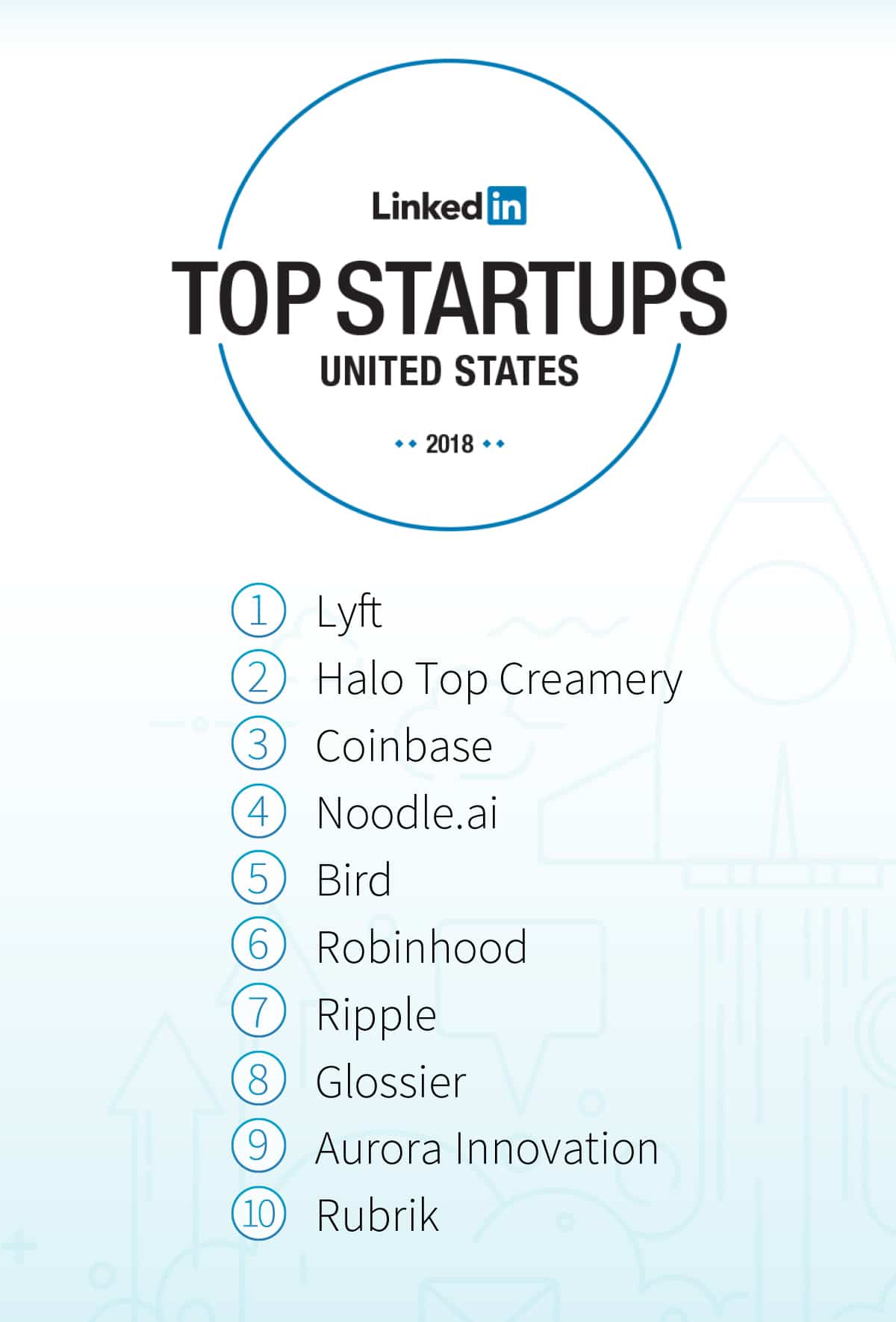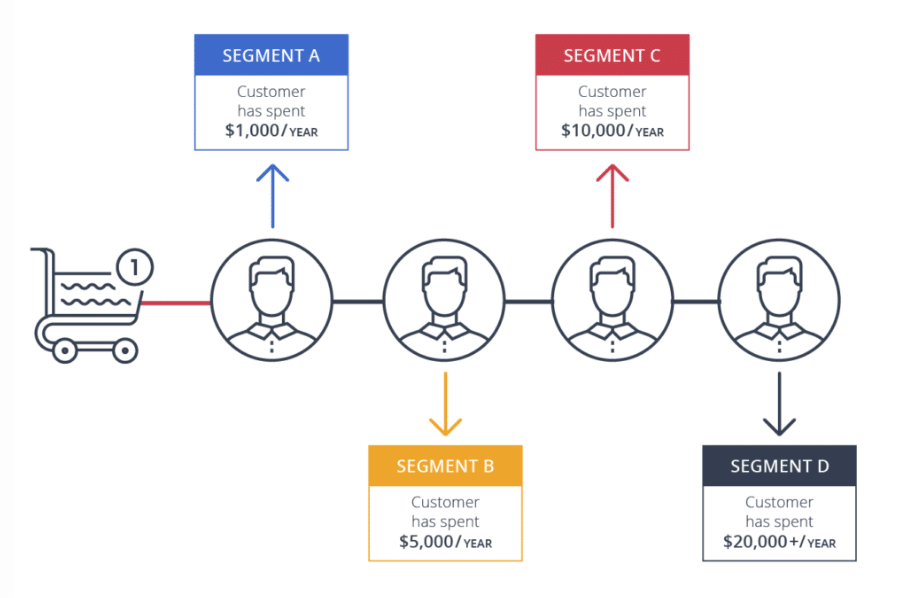People are pursuing startup-related opportunities all over the world, meaning your startup may need a strong advantage to face the competition. Thoughtful planning can give your business a competitive edge. This planning may include the adoption of various strategies. Specifically, it may be time to focus on email marketing for your startup.
If you’re worried about the financial implications of email marketing, a newsletter campaign is actually a fiscally responsible way for startups to increase revenue. Today we’ll discuss how email marketing for startups is both an inexpensive and invaluable step you can take for your business.
Let’s get started.
What makes a startup a startup?
First thing’s first. Do you define your company as a startup? After all, there are subtle differences between startups and small businesses, so it’s important to gauge the group to which your budding business belongs.
Startups vs small businesses
Most startups expect extreme growth, target mass audiences, and rely on investors for funding. Small businesses, on the other hand, often pursue small-scale (yet steady) growth, appeal to niche audiences, and typically rely on internal funding.
Where does your business belong? If you have a software company you’re looking to scale and eventually sell, it’s probably a startup. This is different than a mom-and-pop pizzeria, which is more likely to fall in the small business category.
Whatever your business, email marketing can help.
Email marketing for startups: 5 lessons to live by
- An email list for your startup is priority
- Email marketing can drive revenue
- Good copy matters
- Automation can improve your brand
- Customization will appeal to your audience
While email marketing is crucial for both startups and small businesses, startups should absolutely implement email marketing if they are attempting to scale quickly.
Email marketing is extremely valuable in terms of growing your list of interested and loyal users. And while word-of-mouth marketing is technically more valuable, the two aren’t mutually exclusive.
How to get the word out
For instance, let’s say you send customers a coupon code. The only requirement? They must refer a friend. If the majority of your customers refer a friend, you could potentially grow your email list size in a matter of hours.
Tictail illustrates this type of marketing in their email below. Referrals not only provide incentive to your users, but there’s a strong word-of-mouth element, too.

Source: Really Good Emails
1. An email list for your startup is priority
Consider, for instance, the various ways you might choose to market your startup. You could take out a banner ad, raise awareness on your blog, discuss your business on social media, or include information in an email (or all of the above, if you’re looking to cover all bases).
While each of these methods can provide you with new customers, some of them also include caveats.
Email lists perform better than other marketing efforts alone
For instance, banner ads may provide direct sales, but most people are more likely to survive a plane crash than click on a banner ad. Additionally, the ROI of banner ads is sometimes among the lowest produced by online marketing campaigns, compared to 4400% ROI on an email marketing strategy.
Blog posts—especially those that are optimized—are a valuable way to share information, but an email list gives you more control over what readers are seeing and reading.
And while social media is an awesome way to build relationships, 3.03 billion people use social media, compared to the 4.1 billion people who use the internet. That’s ~74% of all internet users. Just to put that in perspective, 92% of online adults use email.
How you can grow your email list
Since the success of email marketing is measurable, knowing how to grow a list is necessity. This is especially true for startups needing traffic on a budget.
Videofruit founder Bryan Harris suggests inviting people you know to join your list—people who may be interested in your project. In his example, he adds friends to his list (with their consent), then asks those friends to refer others. Once he has a small subscriber base, he incentivizes the referral process by offering a giveaway.

You can also highlight your referral incentives through your website. If you get a fair amount of traffic, consider making a landing page with basic information about your contest or givewaway, then make signing up easy.
If your startup doesn’t have an affiliated blog, create one. Your blog posts can be used to offer content upgrades, such as PDFs, ebooks, and classes. You can see this firsthand in the post below from A Beautiful Mess, which provides details and instant access to a paid video class.

2. Email marketing can drive revenue
Not only do newsletters facilitate consistent interactions, but they also provide a chance to introduce sales funnels. You can provide information about your paid services or products, or you might even give customers the opportunity to convert from unpaid to paid.
Introducing a sales funnel in your email
There are a number of ways to encourage sales in your emails. A traditional approach might be to send a promotional email regarding a new product. This approach is a classic, easy way to generate leads and pull traffic to your site.
But you can encourage sales through more than just promotional emails. Consistent newsletters with educational information, testimonials, and discount codes are subtle ways to push your product and stay relevant with users.
Notice how Thrive Market employs each of the above mentioned techniques in their newsletter below. In the email, Thrive couples a discount code with information about how the service works, and the email then leads into testimonials from satisfied customers.

Source: Really Good Emails
For a user on the fence, this email provides a financial perk, proactive information, and positive reviews from other everyday customers. The email offers more than just a promotion—it’s giving a full story on why the customer should spend money with Thrive.
The balance of freemium and premium
Earlier, we discussed using email marketing to convert free users into paying customers. To do this, you must be willing to engage your users, as well as convince them of the value of your paid content. (In other words, why is paid content better than the free stuff?)
You can see an example of this in the email below. Vecteezy offers users a chance to upgrade freemium content, just by clicking on the provided CTA. The selling point for the paid content is convenience. Users can utilize files however they want, no strings attached.

By offering a balance of freemium and premium content, you’re gently pushing users to try a paid option. This is an important opportunity for startups, since freemium is the dominant business model among internet startups and mobile app developers.
Free content can often generate a wide, international user-base, making it ideal for growth and trust-building. Still, companies need their products and services to provide a reliable source of revenue. So, if you’re not going after the freemium-premium balance with your email marketing, consider how you might push it going forward.
Third-party revenue streams
You use your email list as a way to generate sales for your business, but you can also use newsletters as a place for affiliate marketing and targeted ads. For startups looking to generate revenue, this option can be highly beneficial.
The example below is taken from the The Hustle, a daily tech-centric newsletter. As you can see, the deals section conveniently allows users to review the deals or skip the sponsored content altogether.

3. Good copy matters
Conversions are important for any business. Before users convert, however, they must first be willing to click your messages.
To convince customers to open your emails (and hopefully buy from you), the copy has to interest them. If you’re wondering how to write this copy, consider first what interests you.
When you visit your inbox, which email do you open first? The one that promises something interesting. Something click-worthy. Emails that drive curiosity, utilize FOMO, and include numbers, just to name a few.
Hooking users with subject lines
Brands that sell long-term products have to make emails especially interesting to gain clicks. Warby Parker uses the subject line, “A little something,” in the email below. By implementing a curiosity gap, Warby Parker encourages curiosity among customers. The intention? Customers will open the email, whether or not they need new glasses.

Reeling in users with header pretext
You have more opportunity than just the subject line. You also have a chance to engage readers with your header pretext. If the subject line is the hook, think of the header pretext as the reel.
Take the example from Glassdoor below. The subject line is “8 Secrets Recruiters Won’t Tell You.” To supplement the headline, there is additional header pretext that says, “Top wellness perks and salary advice, too.”
If you’re a job-hunting professional, this offers the complete package: recruiter secrets, wellness information, and financial advice. Instead of relying on a single strategy, Glassdoor is appealing to users through the curiosity gap and authoritative copy.

4. Automation can improve your brand
There are certain emails we count on receiving, even if we don’t realize it. Receipts and confirmations are just a few digital documents we rely on, and in the same way, your emails should proactively work to meet the needs of your customers.
Welcome emails
What better way to set the right tone than through a welcome email? This is a quick way to establish your site, while also guiding customers to your store. If your startup is new, this is a perfect opportunity to differentiate your brand and personalize your product.

Source: Really Good Emails
Notice how the above email from Rapha uses the welcome process to explain the newsletter, discuss benefits, and most importantly, provide a direct link to the shop.
Replenishment emails
Replenishment emails also illustrate the proactive nature of a good email marketing strategy. These emails prompt users to refill and repeat orders, giving customers a convenient way to continue buying.

You can see Rockin’ Wellness’ replenishment email above, which prompts users to purchase another month’s supply just in time.
Abandoned cart emails
Abandoned cart emails are an equally convenient and effective way to convert customers. While ~75% of shoppers leave sites without completing purchases, remarketing efforts can garner an email open rate as high as 57% among customers.
In short, most customers are going to ditch their cart before completing checkout, but that doesn’t mean they don’t want to buy. And abandonment emails can achieve a success rate as high as 29%.

Source: Really Good Emails
Above you can see an example from Winc, which encourages users to finalize the checkout process, using two separate CTAs and a promo code.
5. Customization will appeal to your audience
Customizing emails for every recipient on your list is unrealistic, especially when it comes to email marketing for startups (which are, by definition, businesses made to grow fast). Still, you can positively tailor your users’ experience through A/B testing, targeting, and segmentation.
A/B testing
If you consistently advertise products and services in your emails, you may want to experiment with sales copy and graphics. But what if this new approach confuses users? What if it backfires?
Luckily, you don’t have to make a leap without reliable data. A/B testing is a great way to test new methods while also maintaining a traditional strategy, so you can gauge the top performer.
What’s more, you can A/B test almost anything, so take advantage of this opportunity when possible. After all, it’s virtually risk-free.
Targeting and segmentation
While A/B testing is a perfect way to gather data during your campaign, you can use segmentation to customize your emails prior to launch.
Maybe you’ve seen the highly specific shirt ads on Facebook, with phrases such as, “Never underestimate a mother who listens to Iron Maiden and was born in August.” Companies that make these shirts use data and algorithms to target users, advertising shirts that are highly customized.
While this example is a bit extreme, it does illustrate how marketers target users through data. Age, location, and behavior are just a few data points marketers use when segmenting emails and customizing user experiences.
Wondering how you can use segmentation for your unique customers? Below is an example of segmentation based on financial behavior. You might also choose to segment based on user niches or usage frequency.
Wrap up
Whether you’re building a fast-paced startup or a brick-and-mortar small business, you can apply these lessons of email marketing for startups (and small business ventures) to your brand.
Email is a great way to drive revenue and growth for your company, and you can easily see results with a bit of care, automation, and knowledge of your user-base.








